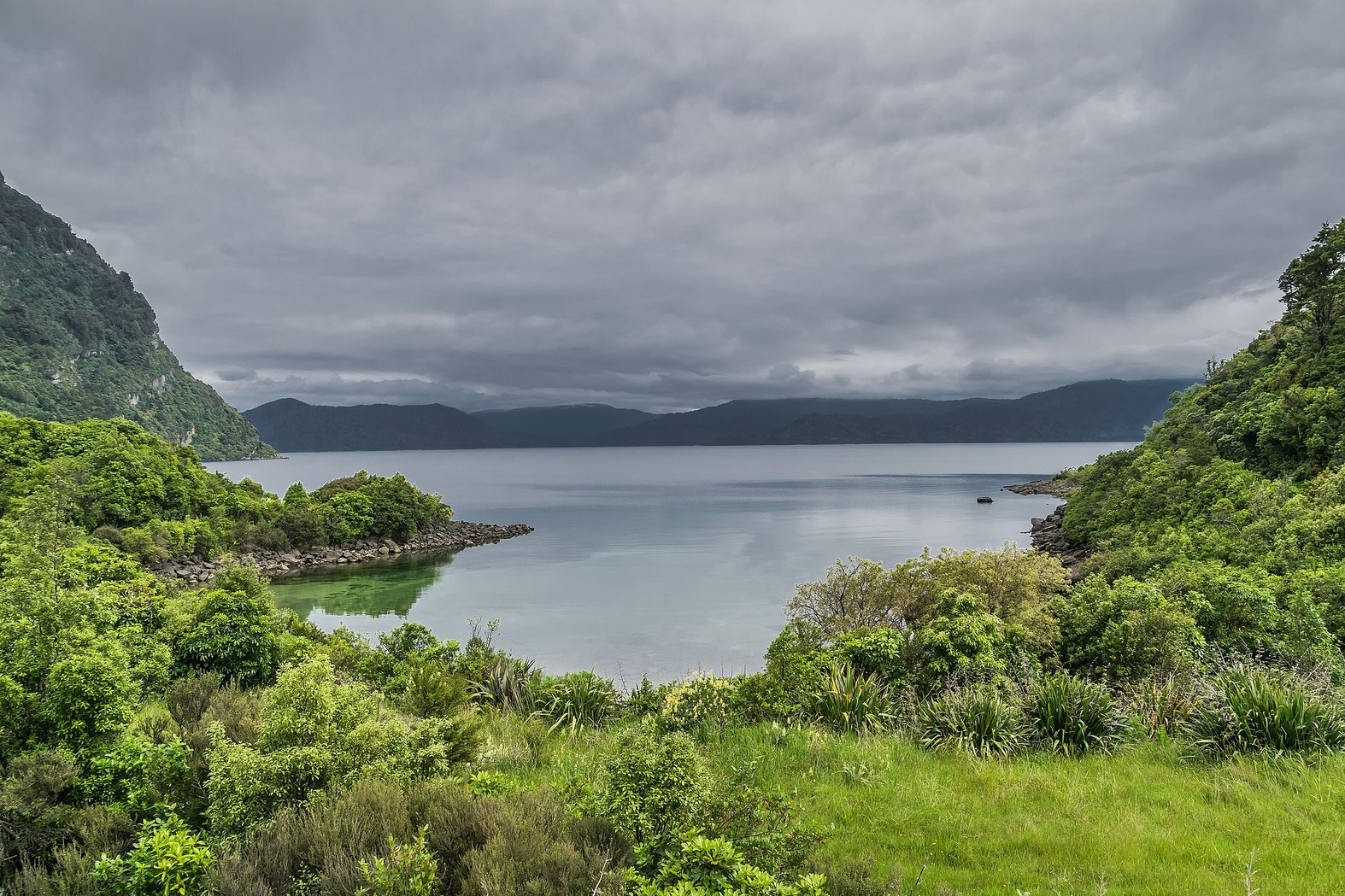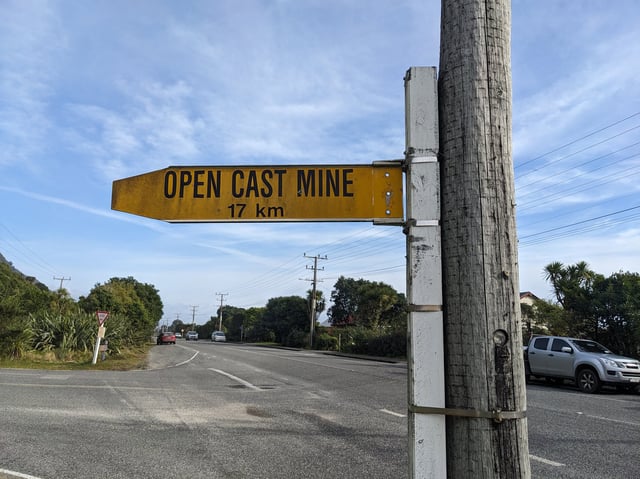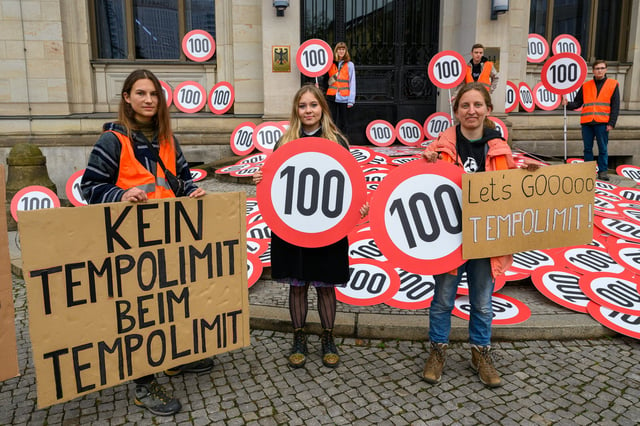
Photo: For years, New Zealand has been a global leader on climate and conservation, with bold moves like securing rights of nature for Te Urewara national park, pictured here. The current government is working overtime to turn the country into a heavy polluter instead. Photo by Krzysztof Golik, under Creative Commons license, via Wikimedia Commons.
When New Zealand confirmed in late June that it would abandon a commitment to phase out oil, gas and coal there was no public announcement. The country of 5.2m people in the Pacific had been a founding member of the Beyond Oil and Gas Alliance (BOGA) when the international group was launched in 2021 at the Glasgow climate conference. Representatives of the New Zealand government stood alongside those from European nations such as Spain, France and Denmark, and the country’s Pacific neighbors, Samoa, Tuvalu and Vanuatu to announce they would work towards a managed phaseout of oil, gas and coal in pursuit of a just transition away from fossil fuels. It was part of a broader, global push to deal with the root cause of climate change, and, for New Zealand, a decision that reinforced its clean, green image.
Two weeks ago, when the country confirmed it was exiting the Alliance, New Zealand said it was done. Normally, a decision of this magnitude would merit, at a minimum, some sort of public statement, but when it was finally reported in late June it took reporters to chase up climate minister Simon Watts to confirm.
At issue was a commitment by the recently elected New Zealand government to lift a 2018 ban on offshore gas exploration and restart fossil fuel production in the country. The right-wing coalition government – composed of three parties, the conservative National Party, and its junior partners, the libertarian ACT Party and nationalist New Zealand First – pledged to lift the ban during the 2023 election campaign that brought it to power. In the year since, Watts waved off concerns that the country would be forced to leave BOGA if it allowed gas exploration to restart, telling local media in 2024 that he had received departmental advice that there was no issue.
“It is our expectation that we will remain an associate member,” he said.
New Zealand has long prided itself on its clean, green image and remaining an associate member of the group was one way to cling to this reputation despite a shifting reality. Watt’s statements, however, were misleading. In response to New Zealand making its decision known, BOGA issued a statement making clear it had warned the government soon after it came to power that any repeal of the ban would trigger their exit.
“Considering this, and amid ongoing efforts to pass the legislation and establish an investment fund for domestic gas exploration, the Government of New Zealand has confirmed that it will withdraw from BOGA,” the statement said.
Watts, for his part, insisted New Zealand was still serious about its climate targets but said the decision was justified. “Natural gas,” he said, “will play an important role” in the country’s “transition towards lower emissions fuels” – common talking points favored by oil and gas industry figures.
The decision may not be as consequential as Brexit, as predictable as Donald Trump pulling the US out of the Paris Agreement for the second time, or as absurd as the oil-rich Canadian province of Alberta pushing to secede from Canada to join the US, but it is emblematic of the extent to which the country’s new leadership is working to rewire New Zealand in a way that frustrates climate action, and complicates global efforts to build momentum for change.
Since coming to power, Deputy NZ Greens leader and climate change spokesperson, Chlöe Swarbrick says New Zealand’s new government has de-funded at least 35 climate initiatives as it has prioritized the interests of a small group of business leaders, fossil fuel producers in particular, ahead of the public.
“It’s a shredder,” Swarbrick says. “They’ve put climate policy through a shredder.”
Among the bigger programs to get the axe were an emergency response fund for extreme weather events and natural disasters, a clean investment fund to help encourage renewables, and measures to support the uptake of electric vehicles and associated EV infrastructure programs. These have been replaced with a battery of proposals that would help smooth the way for new gas and coal investments, including legislation to fast-track new resources projects such as coal mines in a way that bypasses environmental regulation and community consultation, breaking up the Department of Conservation, adding coal to a list of “critical minerals” and a private members bill that would force banks to provide services to fossil fuel companies to end an effective, decades-long divestment campaign by 350Aotearoa. Some in the government have even floated the idea of abolishing local councils, after some local authorities near new resource developments such as the proposed coal mine the Denniston Plateau, near Westport in the South Island have expressed opposition.
This shift should perhaps be expected from a government that has consistently sought to highlight its closeness to industry and embrace of extractivism, and demonstrate hostility to those branded critics. In June, New Zealand’s Prime Minister Christopher Luxon dismissed a group of 26 climate scientists as “worthies” after they penned an open letter warning that this government was “ignoring scientific evidence” on climate change. This was partly in response to the government’s efforts to weaken targets for the reduction of methane emissions by 24 and 47 percent by 2050 – a move favored by livestock producers. According to a report in Farmer’s Weekly, Watts himself told a meeting of agricultural producers in February that the targets countries set under the Paris Agreement are “more for big countries”, that New Zealand only joined for the optics and that it would face no penalty if it did not meet its emissions targets.
“Some will meet them, and some won’t just because [of] national circumstance. You have to have the intent to meet it and if you don’t meet it, no one sends you an invoice – and that’s why it’s not a liability on the government’s books,” Watts said.
“It’s not a liability on our books, it’s intent and there is no legal obligation in the context around that.”
Since coming to power, the coalition government has also appointed industry lobbyists John Carnegie, CEO Energy Resource Aotearoa, and Andrew Knight, CEO of Gas Industry Co and former managing director of New Zealand Oil and Gas, to the board of the Energy Efficiency and Conservation Authority. Its members boast their own connection to the oil and gas industry. Finance Minister Nicola Wills is the daughter of the chairman of New Zealand Energy Corporation, and a former director of the New Zealand Initiative, a free market think tank aligned with the Atlas network.
Among the chorus of loud voices within the government promoting the extraction and use of fossil fuels, the biggest advocate for bulldozing through opposition and rebooting gas and coal production has been Resource Minister Shane Jones. A combative figure, Jones described the decision to ban offshore gas exploration as “the most destructive decision in the history of New Zealand’s industry”. During one parliamentary sitting in June, he attacked the previous Labour government for having been “riddled with woke-ideology” saying that “gas must be embraced.”
“Sadly, ideological sludge does not make for good energy,” Jones said. “This government is rebuilding investor confidence, which in the gas and petroleum sector suffered a decline.”
Jones, who belongs to New Zealand First, has pledged to double the country’s mineral exports to $3bn over the next decade, even as he has simultaneously argued new gas and coal developments are needed to ensure “security of supply” for New Zealand’s domestic energy needs.
It is hard to reconcile these twin claims with New Zealand’s current circumstances. Nearly two thirds of New Zealand’s power generation in 2023 – 60.5% – was derived from hydro power. When counting hydro, geothermal, wind and solar the total share of renewables in the country’s energy grid rose to 88.1%. Of the remainder, just 9% was produced using gas and 2% from coal. This puts New Zealand in the enviable position of having to do less work to move away from oil, gas and coal in its power grid. Over-building renewables, in this situation, should offer a means to push out the remaining reliance on fossil fuels, as they are quick to install and turn on. The current government, however, has sought to encourage new gas developments for their “firming” capacity.
With long lead times on these projects, even under the most supportive of conditions, New Zealand’s domestic market is unlikely to have access to locally-produced gas for a decade. This suggests that any new find would be destined for export at a time when gas companies worldwide have been racing to lock in megaprojects as talk of more determined climate action threatens the longevity of their business, leading some analysts to note the emergence of a global gas glut. The balance of low gas prices, cheap wind and solar and falling demand as electrification picks up, raises a critical question: in this hypothetical, who will buy New Zealand’s theoretical gas in a crowded market where major players like Qatar are already well-established? China, the world’s biggest market, has installed 900 gigawatts of solar capacity since 2010, and another Sweden’s-worth of renewable generation in May alone. Electric vehicles now account for half of all new car sales in China, a country of 1.41 billion people, and oil consumption there is currently expected to peak by 2027, making forecasts about future demand somewhat shaky. Meanwhile Japan, which soaks up two fifths of the world’s gas each year, has been buying more gas than it needs and on-selling the rest across South East Asia in recent years. Even Pakistan – one of several South-East Asian countries considered as emerging markets for Canadian, US and Australian gas – has been looking to do the same, suggesting the country may leap-frog fossil fuel infrastructure for power generation entirely.
The centerpiece of Jones’ fossil fuel revitalization, however, has been a (USD $121m) $200m co-investment fund for new gas exploration announced in the 2025 budget. Under this arrangement, the government would provide financial support to new gas exploration in return for an equity stake in the eventual development. Already there are signs the proposal may carry unexpected costs. Climate Change Minister Simon Watts has previously acknowledged that New Zealand’s free trade agreements with countries like the UK and EU are tied to its commitment to the Paris Climate Agreement, meaning it cannot leave like the US and must maintain climate targets. There are already signs the government’s change of direction violates other agreements. Legal advice commissioned by the NZ Greens and made public in July suggested that the government’s co-investment fund violated trade deals signed with Costa Rica, Iceland and Switzerland. Though the advice noted that these agreements were not yet in force, it found the fund “falls within the definition of a prohibited fossil fuel subsidy” and would create a “a risk that a breach could trigger the dispute resolution process culminating in suspension of cooperation measures, including the reinstatement of tariffs and the suspension of the other trade benefits to New Zealand.”
“New Zealand is a small country,” Swarbrick said. “We rely on other countries following the law – what we used to call the rules-based international order. When they say we’re a small country, what we do doesn’t count, the emissions we generate have no impact, that’s the irony. We need people to follow the rules so we can’t say we’re not going to follow them ourselves.”
To date the government has rejected claims that its re-embrace of fossil fuels has compromised New Zealand’s reputation internationally or violated the terms of its trade agreements. Trade Minister Todd McClay insisted the country was compliant with its trade agreements and dismissed concerns raised by the Greens as “scare-onomics”.
Those working to push back against the government have found themselves confronting a familiar strategy. Film director and climate communications specialist Martha Jeffries described the aggression and flurry of activity by the government as borrowing from the Trump administration in the United States. The goal, she says, is to overwhelm opponents and critics who have limited resources and generally focus on one specific issue at a time.
“It’s happening all at once,” she says. “First they flood the zone, then they shift the Overton Window by taking things which were previously thought settled and opening them up to debate.”
“This is almost post-greenwashing – they’re quite open about what they’re doing, not even bothering to try to hide it. They try to sneak some things into policies with mundane-sounding language, with bills named things like, ‘No Additional Warming’ or the ‘Regulatory Standards bill’ that gives more power to corporations, but most of it is very overt.”
“The more you talk about it, the more possible it becomes. Whoever tells the story rules the world and it’s really difficult to tell an alternative story when it’s death by a thousand cuts, all at once.”
Some groups have been pushing back. In June, 300 of the country’s top lawyers sued the government over its “slash and burn” approach to climate change. The lawsuit, brought by Lawyers for Climate Action NZ and the Environmental Law Initiative, sought judicial review on the government’s scrapping of climate policies. Jessica Palairet, Lawyers for Climate Action NZ executive director said the courtroom was one arena where the New Zealand government couldn’t deflect questions.
“Climate litigations like this are where the rubber hits the road,” Palairet said. “There are not many venues where the Crown has to respond, actually answer questions and defend their approach. The courtroom is one of them.”
The lawsuit comes in two halves. Unlike other countries, New Zealand has a climate law that provides an overarching architecture for how individual climate change measures get made, adopted and retired. The first part of the lawsuit alleges the government failed to follow these processes when it scrapped dozens of climate policies upon coming to power. The second half of the lawsuit takes direct aim at the government’s singular focus planting trees to solve the climate crisis.
Even as the current New Zealand government has sought to end any measure that would reduce consumption of fossil fuels and ultimately replace them, tree planting has received heavy emphasis as key to the government’s climate strategy. Under the plan, the New Zealand government wants to plant around 700k hectares of new trees by 2050 to offset the emissions it generates by burning oil, gas and coal. These measures, however, do not involve reforestation. The approach so far has been to encourage the country’s forestry industry to plant massive pine plantations – a non-native species to New Zealand – that could later be harvested for timber as an export product. This is being driven by a financial incentive created by the country’s Emissions Trading Scheme that allows foresters to claim carbon credits for offsetting emissions created by fossil fuel use with the trees they plant.
The idea for “nature-based climate solutions” that New Zealand’s current government has adopted as policy emerged in 2019 with a paper by German academic Thomas Crowther that called on the world to plant a trillion trees to soak up excess carbon in the atmosphere. As a way of dealing with climate change, it appealed particularly to those who approached the problem with the same logic a suburban accountant may apply to balance a ledger. More trees meant less carbon in the atmosphere, which in turn meant the costly, time-consuming task of phasing out oil, gas and coal was no longer necessary. The international combustion engine would get to live, there would be no investor revolt and the climate would stabilize.
When companies oil producer Shell and Donald Trump, during his first administration, adopted the idea, Crowther felt compelled to qualify his position by saying tree planting was no replacement for fossil fuel emissions reduction. New Zealand’s current government, however, appears keen to hang onto the suggestion – an old one in the context of three decades of efforts to deal with climate change in the country. Cindy Baxter, chair of Coal Action Network Aotearoa, was working in a communications role for Greenpeace in 1991 during early negotiations on the United Nations Framework Convention on Climate Change. She says New Zealand and Australia coordinated to lobby for forests and land use to be included in emissions calculations.
“They turned up and were really pushing forest sinks,” Baxter says.
Known as LULUCFs, delegations from both countries understood that counting forests lowered the total emissions they would ultimately need to eliminate – and they were largely successful. For Australia, this lobbying effort culminated in a notorious, last-minute carve-out worked into the Kyoto Protocol that came to be known as the “Australia Clause” that gave it credit for doing nothing. Under this calculus, Australia was allowed to bank emissions it saved by not cutting down forests and clearing bushland. In New Zealand’s case, Baxter says the current government has largely taken an old idea to its logical extreme.
“New Zealand generally has a mindset that the only climate action that we can take is planting trees. What they are doing now is business as usual,” Baxter says. “It’s what New Zealand has done for the last 30 years. We have a whole government department set up to run all this and they basically convince every new minister that comes in that this is the way that’s done here, and this is the right way to do it.”
Dr Kate Dooley, a research fellow on climate policy from the University of Melbourne, who has researched the use of tree planting as a climate solution, says the notion that tree planting offers a climate solution is flawed.
“The main issue with tree planting is that governments and corporations think they can use tree planting to offset their emissions instead of reducing fossil fuels,” she says. “From an atmospheric science point of view, it doesn’t work. In terms of climate mitigation –it’s important to be really, really clear here because it’s black and white: planting trees does not compensate for ongoing fossil fuel emissions.”
The problems, Dooley says, are multiple. Every molecule of carbon released into the atmosphere will remain there for thousands of years and the best way to prevent these gases from interfering with the chemical composition of the atmosphere is to prevent them from being emitted in the first place, she says. Once they are released, the only way to limit the damage is to somehow capture these emissions and place them back into geological storage. Trees, however, do not lock away carbon on the same timescales as fossil fuel reservoirs. Eventually they will be cut down and sold, or will burn in a fire. From a wider biodiversity perspective, she adds, plantations like the ones currently being promoted in New Zealand raise additional problems. These vast strips of non-native monoculture are vulnerable to pests and fire, do not create new habitat for wildlife and can pollute waterways.
A recent report from the independent Parliamentary Commissioner for the Environment, headed by former National Party politician Simon Upton, came to the same conclusions as Dooley. It warned that tree planting is “being latched onto as a cheap, easy way for New Zealand to achieve its climate goals” and that “the risks it raises simply aren’t worth running”.
“The environmental driver – sequestering carbon to offset emissions – is based on a deeply flawed assumption of equivalence between carbon dioxide emissions from fossil fuel combustion and their capture in stocks of biological carbon,” it said. “To put it simply, because of the long-lived nature of carbon dioxide emissions in the atmosphere, any forests planted to offset those emissions need to effectively remain there forever. If we continue to emit carbon dioxide and not reduce gross emissions, we will need to continually plant more and more forests.”
Dooley says a better approach would be to protect existing natural ecosystems, reforest areas that have been cleared by planting mixed species that were there before – and to phase out oil, gas and coal use.
“It’s a loophole or a get out of jail card,” she says. “Tree planting looks so simple. Everybody loves trees. It looks like a win-win-win – a triple win. It’s easy to sell.
“The reason why I think this has persisted beyond common sense as a climate solution is that it’s very convenient for those who don’t want to reduce emissions.”
Drilled contacted the offices of Simon Watts and Shane Jones with detailed questions but did not receive a reply.




